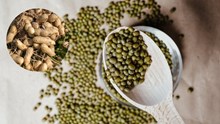
After farmers finish harvesting their Rabi crops, they quickly shift their focus to preparing for sowing the summer crop. Many farmers choose to grow urad dal during the summer months. Urad, also known as black gram, is an important pulse crop cultivated across India. People consume it in various forms like dal (split or whole, with or without husk) or sprouted. Urad dal is not only nutritious for humans but also beneficial for milch animals. Moreover, it serves as a green manure crop, enriching the soil. The high lysine content in urad dal makes it an excellent complement to rice, providing a balanced and nutritious diet for people.
Climatic Requirement for Black Gram Cultivation
Being a crop of tropical regions, it requires a hot and humid climate for best growth. It is a warm-weather crop. In the Northern parts of country where the temperatures during winter are quite low, it is cultivated generally during the rainy and summer seasons. In the eastern states, it is also grown during winter. In Central and Southern states, where there is not much variation in the climate, it is cultivated during winter and rainy seasons.
Soil & Land Preparation
Black gram can be grown on a variety of soils ranging from sandy soils to heavy cotton soils. The most ideal soil is a well-drained loam with a pH of 6.5 to 7.8. Black gram cannot be grown on alkaline and saline soils. The land is prepared like any other kharif season pulse crop. However, during summer it requires a thorough preparation to give a pulverized free from stubbles and weeds completely.
Varieties of Black Gram/Urad
Farmers should choose hybrid seeds for summer urad cultivation. Because hybrid seeds have high production capacity and also can tolerate temperatures of 45 to 50 degrees, due to which farmers can easily earn lakhs by producing 15 to 20 quintals per hectare. Pant Urad 31, Pant Urad 40, IPU 02-43, WBU 108, Shekhar 1, Uttara, Azad Fulad 1, Shekhar 2. Shekhar 3, Mash 1008, Mash 479, Mash 391 and Sujata are the major ones.
Sowing Time & Method
-
Kharif: In the kharif season sowing is done with the onset of monsoon in later part of June or early part of July.
-
Rabi: Second fortnight of October (upland) second fortnight of November (Rice fallow)
-
Summer: The sowing could be done from the third week of February to first week of April. Sowing should be done in furrows opened at a distance of 20-25 cm. seed drill could be used for this purpose.
Seed Rate & Spacing
-
Kharif: During kharif season 12-15 kg seed/ha. The crop should be sown at a distance of 30-45 cm. with 10 cm. plant spacing.
-
Rabi: About 18-20 kg seed/ha for upland and 40 kg/ha for Rice fallows with a crop geometry of 30 cm x 15 cm. Higher seed rate in rice fallow is used due to delayed in sowing.
-
Summer: About 20-25 kg seed is required per ha. Plant-to-plant spacing should be kept at 5-8 cm depending upon sowing time and varietal behaviour.
Seed Treatment
Treat the seed with Thirum (2g) + Carbendazim (1g) or Carbendazim @2.5 g/kg seed to control the soil & seed germinated disease. For sucking pest control seed treatment with Imidacloprid 70 WS @ 7g/ kg seed. It is also desirable to treat the seed with Rhizobium & PSB culture (5-7 gm/kg seed).
Fertilizer
For sole crop, 15-20 kg/ha Nitrogen, 40-50 kg/ha Phosphorus, 30-40 kg/ha Potash, 20 kg/ha Sulphur should be applied at the time of last ploughing. However phosphatic and potassic fertilizer should be applied as per soil test value. Fertilizers should be applied by drilling either at the time of sowing or just before sowing in such a way that they are placed about 5-7 cm below the seed. The use of gypsum @ 100 kg/ha would ensure the availability of calcium and sulphur at economical rates.
Water Management
In the Kharif season irrigation is not required, if rainfall is normal & if moisture deficit at the pod formation stage irrigation should apply. In summer 3-4 irrigation is required according to crop requirements. Generally, the crop should get irrigation at an interval of 10-15 days. From flowering to the pod development stage, there is a need for sufficient moisture in the field.
Weed Control
One or two hand weedings should be done up to 40 days of sowing depending upon the weed intensity. Weeds can be controlled by the use of chemicals too. Use Pendimethalin 0.75-1.00 kg a.i. per ha in 400-600 liters of water as pre-emergence application.
(Source: Directorate of Pulses Development)

















